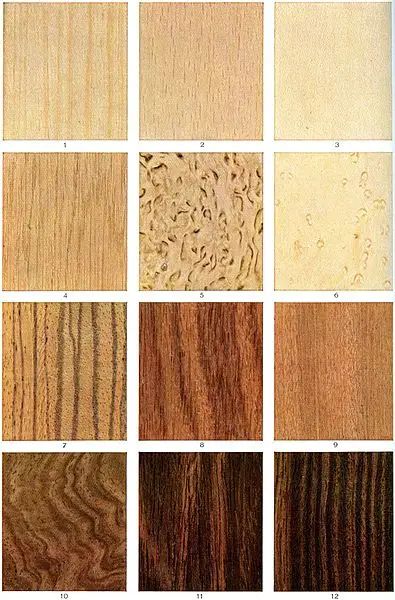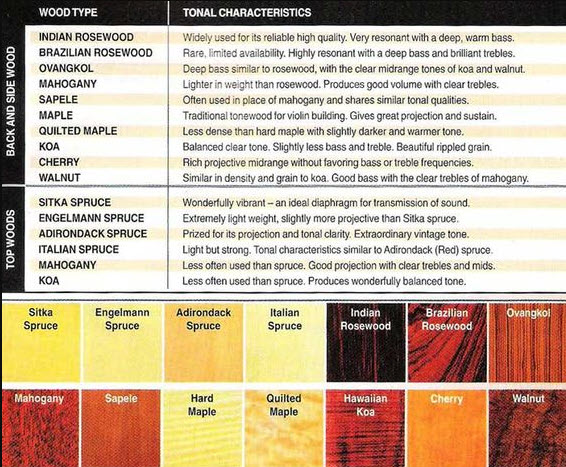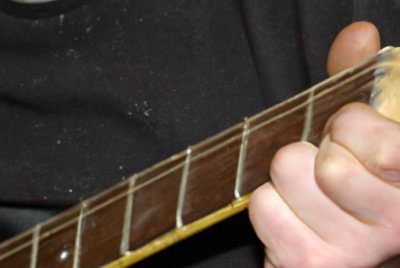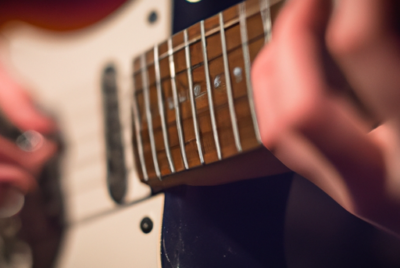What is the Role of Tonewood in Guitars?
When it comes to the wonderful world of guitars, one term you’ve likely heard buzzing around is Tonewood. But what exactly is it? How does it impact the sound and playability of your beloved six-string instrument, be it an acoustic or electric guitar? In simple terms, tonewood refers to the specific type of wood that a guitar is made from.
These woods are chosen with care, based on their unique acoustic properties, to help shape the distinct sounds that make every guitar special. Whether you’re a hobbyist strummer or a professional shredder, understanding the role of tonewood, also known as guitar wood, can be a game-changer.
In this article, we’ll delve into the depths of tonewood: from the most common types such as mahogany and rosewood to the ongoing debate about their real impact on a guitar’s tone. We’ll also examine the relationship between the tonewood and the type of guitar, as well as touch upon the important issue of sustainability in guitar production.
So, buckle up as we journey through the forest of guitar woods, shedding light on the elusive quest for the perfect tone, and helping you make more informed decisions to find your ideal guitar wood. Ultimately, we aim to help you uncover how your guitar’s wooden heart beats and breathes life into every note you play.
Understanding Tonewood
Have you ever wondered why different guitars produce different sounds? Sure, the strings and the construction matter a lot, but there’s more to it. One crucial aspect that greatly impacts a guitar’s sound is the wood it’s made from, known in musician lingo as tonewood,
Tonewoods aren’t just any woods. They’re specially chosen for their acoustic properties. In other words, these woods can help to enhance the sound your guitar produces. When you strum or pick your guitar strings, they vibrate. These vibrations then travel through the guitar body, which is where the tonewood comes into play. The vibrations interact with the wood, and depending on the type of tonewood, the sound produced can vary.
Let’s go on a quick trip down memory lane. Historically, specific types of wood have been favored for musical instruments because of their tonal properties. Luthiers – those are the skilled folks who build and repair guitars – would select different woods to create different sounds. This isn’t a new concept. It’s been done for centuries!
Now, the big question is, how can different woods affect the tone and playability of your guitar? Well, every type of wood has its unique density, flexibility, and resonance, which can affect how it absorbs and projects sound. So, depending on the wood, you might get a brighter tone or a warmer, deeper one. It’s a lot like cooking – different ingredients can alter the flavor of your dish!
In the following sections, we’ll dive deeper into the most common tonewoods like mahogany, rosewood, and maple, their acoustic properties, and the unique sounds they can produce. It’s a fascinating world – you’ll see!
Primary Types of Guitar Tonewoods
Ready to take a closer look at the variety of woods that give life to our guitars? Let’s go!
Mahogany Tonewood
This is a top choice for the best wood for a guitar body, particularly for electric guitars and acoustic guitar necks. Mahogany is loved for its warm, rich, and resonant tone. It offers a well-balanced sound with a hint of bite, which is perfect for rock and blues.
Rosewood Tonewood
A heavyweight in the world of tonewoods, rosewood is commonly used for fingerboards and back and sides of acoustic guitars. It gives a rich, complex tone with deep bass and sparkling highs. If you’re into music with intricate, layered sounds, rosewood might be your best buddy.
Maple Tonewood
Maple is known for its bright, clear tone. It’s often used for guitar necks and bodies. It helps produce a strong sustain and sharp attack, making it a favorite among those who play high-energy music.
Spruce Tonewood
Spruce is the king of acoustic guitar tops (or soundboards). It’s lightweight but strong, offering a broad dynamic range and crisp articulation. It’s ideal for many styles of music, from country to pop.

Cedar Tonewood
Similar to spruce, cedar is commonly used for acoustic guitar tops. It’s less dense, providing a warm, rich tone. It responds well to a light touch, making it perfect for fingerstyle players.
Alder Tonewood
Alder is popular for solid body electric guitars. It offers a balanced tone with excellent sustain. Its resonance is often likened to that of mahogany, but with a little extra zing on the top end.
Ash Tonewood
There are two types of ash used in guitar making – swamp ash and hard ash. Swamp ash is light and offers a sweet, airy tone, while hard ash is denser and provides a bright, snappy tone.
Remember, the way the tonewoods are used can influence the sound they produce. For example, the wood used for the top of the guitar (also called the soundboard) will have a greater impact on the tone than the wood used for the back and sides.
So, how do you spot these woods? Well, apart from their tonal characteristics, each wood has a distinct visual appeal. Mahogany usually has a reddish or brown hue; rosewood is dark brown with unique grain patterns; maple is typically light with a natural gloss; spruce looks pale and has uniform grains; cedar is darker and redder than spruce; alder comes in many shades, from light tan to reddish-brown; and ash, especially swamp ash, can range from creamy blonde to dark brown.

Tonewoods and Guitar Types
Now that we’ve explored the ins and outs of tonewoods, let’s delve into how they tie into different types of guitars. Because believe it or not, the wood you choose can have a significant effect on your shredding.
Let’s start with acoustic guitars. Since these instruments rely on natural amplification, the tonewood plays a huge role in their sound. The top (or soundboard) of the guitar has the most significant impact. Spruce is a favorite for many luthiers due to its strength and ability to project sound. Meanwhile, the back and sides often utilize denser woods like rosewood or mahogany to reflect sound and add depth and warmth to the tone.
On to electric guitars. Here’s where things get a bit more controversial. Some folks argue that because electric guitars use pickups and amplifiers, the tonewood doesn’t matter as much. However, others would say the opposite – that the wood of the guitar body (like alder or ash) still impacts the sustain and resonance of the sound.
And we can’t forget about classical guitars. Typically, these guitars use a combination of cedar or spruce for the top and rosewood or mahogany for the back and sides. This combo helps produce a warm, rich tone perfect for the nuanced sound of classical music.
Ultimately, choosing the best wood for an electric guitar or the right wood for an acoustic or classical guitar will greatly depend on the sound you’re going after. An electric guitar with a maple body might be perfect for someone who loves a bright, snappy tone. At the same time, a classical guitarist might prefer a cedar-top guitar for its warm, intimate sound.
Conclusion
We’ve strummed through a lot of information, haven’t we? From understanding the concept of tonewoods to diving into the unique characteristics of different types of guitar woods, it’s clear that the world of tonewoods is as diverse as music itself.
To recap, tonewoods are specific types of wood used in guitar construction, carefully chosen for their sound-enhancing properties. From the warm, rich tones of mahogany to the bright, clear sounds of maple, each tonewood brings something unique to the table, influencing the final tone your guitar produces.
Remember, whether it’s about choosing the tonewood or deciding between a cedar and spruce top for your acoustic guitar, it ultimately comes down to what your ears love and how it feels in your hands.




